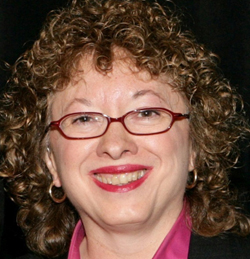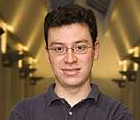”I was small but I never really acted like I was a small guy,” Smith says.
Based in Philadelphia’s Northern Liberties, Little Giant only has three official team members — Smith, logistics and strategy specialist Meegan Denenberg and creative director Irving Navarro. But, guided by Smith’s quiet confidence, the agency has no problem attracting the attention of behemoth corporations. His team, which also boasts countless freelancers, is thriving in the city’s creative ecosystem. Founded about six years ago as the parent company to Two.One.FiveMagazine, the lifestyle publication he started with his partner Matthew Bacine, Little Giant has positioned itself as the company that can connect brand-name companies to Philadelphia’s arts and culture community and trendsetting youth market.
Smith’s background as an independent promoter and music executive is reflected in the market he taps into, a group to which he also belongs, and the types of events, initiatives and campaigns his company creates. For example, partnerships with Heineken and Vitamin Water bring exciting, unique musical and entertainment events to the city. Though Smith’s is a familiar face that can be spotted at most events in Philadelphia, he cares about much more than being socially active, being tapped into the city’s cultural resources and being known as the guy who can connect you with a brand.
Smith is truly concerned about the image that his city projects to its residents and the national and international communities. And he believes that the city’s creators and purveyors of arts and culture are at the crest of a new wave of economic growth for the city. Hence, the Greater Philadelphia Tourism Marketing Corporation’s Philly 360º campaign with the city’s creative ambassadors, created by Little Giant, designed to draw specifically multicultural tourists to the city.
At 40, Smith prides himself on moving easily between the worlds of the Baby Boomers and the Millennials. Members of the latter group belong to the city’s new creative class. And members of the former group belong to or on the boards of the city’s oldest legacy arts and cultural institutions. These groups steer the arts and culture direction of the city and Smith is working his way into the niche position to influence both.
He speaks to Flying Kite about breaking down the doors of Philadelphia’s arts and culture old guard, elevating Philadelphia’s image and economic significance, branding, and the follies of Philadelphia’s youth (creative and otherwise).
KE: Why is Little Giant a nontraditional creative agency?
TS: I’d like to think that we try to embrace things from the 21st century concept, particularly locally. A lot of creative agencies are kind of staid in their methodology or execution. I don’t want to name any names but I think that if you go to a couple different agencies in town you’re probably going to get a print media campaign. You just get the stock thing that you probably have accepted, but [then they add] digital marketing. It’s probably the same thing you would have gotten in 1996. I think we try to think of other options. Some of our clients are Heineken USA; Remy Martin; Greater Philadelphia Tourism Marketing Corporation (GPTMC); the Multicultural Affairs Congress, which is a division of Philadelphia Convention and Visitors Bureau; and Vitamin Water.
KE: I read an interview where you said you want to be an intricate player in re-forecasting how locals and the world view Philadelphia. What partnerships and projects have you been most proud of that reflect that mission?
TS: It’s interesting. I have a love/hate relationship with what we did with print, Two.One.Five [Magazine], because we launched in the worst recession in modern history, in Bush years when ‘Print is Dead’ was a tagline in major media. I think we produced a superior product, whether it was (the) paper stock, content, look, feel, design, (or) photography. I’m proud of what we produced. Would I have done it differently today? Yes. And from that, a lot of people that worked with us who were for hire, or on salary or interns now have jobs or (have) built careers on the energy that Matt and I started. I am proud of that. As tough and expensive as it is. Little Giant was really intricate in creating the Philly 360° brand, which is a multicultural tourism campaign. So everything from the look, the feel, the colors, design, selecting who was going to be involved in the campaign to producing videos, we’re involved with.
For a kid from Philly to be able to be involved in broadcasting how the city projects itself with arts and culture, that (is) cool. Heineken Green Room is unique to Philadelphia. It’s something we created and hopefully we’ll take it around the country one day. Heineken Red Star Access is the national campaign but I think a lot of people don’t realize that Heineken Green Room is unique to Philly. The only other place that (it) happens is Singapore and they’re not connected. I think someone just came up with the same idea in Asia. So, if you Google Heineken Green Room, it’ll be Heineken Green Room Singapore and Heineken Green Room Philly.
KE: Back to Philly 360°. Why do you feel campaigns like this are necessary and how do you see it impacting the city?
TS: Interestingly enough, most of the people involved with Philly 360°, whether it’s King Britt, Rich Medina or the Roots, already have served as creative ambassadors for 15 to 20 years. I think it was probably more important for the tourism community and for the city to get a better understanding of [and] a different perspective on the creative economy. So, on the one hand, it’s a valuable program because it puts a different look to the creative identity of the city, under one umbrella, which a certain audience will appreciate. But I think prior to the Roots being on Jimmy Fallon there was a lot of people in the hospitality community, if I had mentioned ?uestlove [drummer for the Roots] they would have been like, ‘Who?’ But now, (they) know. ?uestlove (was) an intricate part of the Philadelphia International Festival of the Arts. (He was) one of the biggest selling ticketed events. Even though the Roots are a household name around the world there is a certain aspect of the legacy arts community who are still like, ‘Who? What?’
KE: How would you characterize the new creative economy?
TS: The new creative economy is like hip hop in the late 80s, early 90s because it’s functioning, it’s entertainment, it has its own ecosystem to a certain degree. And now I feel like, with the new office of arts and culture we have a need to reach young people or to interact with new demographics or a multicultural audience. So when I say it’s hip hop late 80s, early 90s, Philly is about to be discovered by these institutions and foundations. They’re aware but they don’t really know how to take advantage of it. I feel like we’re about to enter an age where a different group of creatives are going to be given opportunities to do really big things.
KE: What are you still doing in Philadelphia?
TS: I’m in walking distance to my grandmother’s house, walking distance to my house, I’m in walking distance to my office. I don’t think New York and L.A. are the center of the universe. There’s an authenticity to Philadelphia that I appreciate. Even though, to my own professional detriment, I’m aware that there might (be) a lot more opportunities for me if I choose to live in another place, stubbornly, I would like to be a part of seeing Philadelphia make the transition from being thought of as a second or third tier market to a first tier market. I think that’s going to happen in my lifetime.
KE: How important is arts, culture and entertainment to Philadelphia’s economy?
TS: It’s funny because studies have already shown that people don’t choose to live in a city so they can go work for Pfizer. They live in a city (because it) is the cool, hip place, and they’ll feel cool. You don’t move to a place because there are great law firms there. You move to a place because there is great art, or because all of your friends want to move there, or because of an exciting restaurant scene, or it’s a great city escape or it’s easy getting around by bike.
KE: Young DJs or artists, members of the young creative economy stop by your office all the time and it seems like you’re a mentor to some of them. Can you talk about that role?
TS: I’ve had good influences in my life. I’ve had very few mentors. Now that I’m 40, whenever I get invited to a place where there’s actually real businessmen there, or there’s something being talked about, I’m one of the youngest people in the room. There’s this ignorance and naivete to youth. I always hear young people say things like, ‘Next year, I’m taking over!’ Or I hear people in their early 20s talk about (turning) 30 like it’s their death. And that’s like the most ignorant shit ever. So I empathize with young people. They have a lot of purchasing power but they don’t really have that much decision-making power.
Being an XY (generation), I’m bookended by Baby Boomers, who are larger in population and have a majority of the capital and power, followed up by Millenials, who are larger and spending in larger numbers. So I feel, as an XY, it’s my place to maneuver or translate for the Boomers who have the money and power to the generations that are going to inherit that. As far as mentoring, I gain as much from the interaction as people I might be giving something to. But my patience for it is lessening. Just through experience. I’ve created a couple (of) monsters. I think that, because of what I’m involved in, or because there’s a slant that has to do with entertainment or nightlife, I attract a certain type of personality that doesn’t have the hustle or the work ethic to be of any benefit to me so it becomes a one-way street. And I’m totally against one-way streets. I like two-way streets. I don’t want non-reciprocal relationships in my life, no matter who it is.
KE: Can you talk about Devnuts and your experience working in a collaborative workspace? When did you move in?
TS: January of this year. (I find it to be) interesting. I think collaborative workspaces are the future model. I used to share a space with Larry Gold, with the Roots and other production companies and as an independent entrepreneur, the expenses of maintaining a large space – it’s hard to really quantify them or to really show the RI [return investment] besides creating a cool space for people to hang out. From a business, numbers standpoint it makes more sense for our company, particularly the way we do work for hire, to work in a collaborative space. The Devnuts guys are cool. (It’s) interesting (for) a guy who worked with musicians, rappers, and producers to (work with) developers. Developers are some of the most socially inept people I have ever had the good fortune to interact with. But they’re nice guys.
KE: Do you see Two.One.Five Magazine coming out with a print magazine again, at all? Or do you want to focus on the site?
TS: There’s a yin and yang to any partnership. If you ever talk to Matthew Bacine, print is in the future of Two.One.Five. If you talk to Tayyib Smith, there will always be a constantly evolving digital aspect to the brand of Two.One.Five. And that’s all I’ll say (laughter).
KE: You went into publishing without any prior experience. It was obviously expensive, but you developed a really beautiful product. What are other risks, entrepreneurial or otherwise, that you’ve taken that yielded a positive result like that?
TS: I throw shows. Most people go to Vegas or Atlantic City. Events are a big aspect of our branding. It’s funny. I had to call Johnny Brenda’s the other day about a show. The booker asked me, “What was your last show here?” And I said, “I don’t remember.” And he said, “What was the show before that?” I said, “I don’t remember.” I always say I do 12 to 24 shows a year but just in the last twelve months I’ve done Jill Scott after parties in Philly (and) in New York, I’ve done two Roots shows, two Ursula Rucker shows, I’ve done PSK (Philadelphia Sound Konnoisseurs) with Diplo. I’ve done lectures with RJD2, I’ve partnered with R5 (Productions) on some shows. We did Janelle Monae, we did Little Dragon, we did Little Brother, Pac Div. It’s kind of like, give and go. With doing that, sometimes I partner with Livenation, sometimes I do it independently and it’s a gamble. We always provide a good time for people but the concert business is win and lose. (Your show) can be packed and you’ll still lose.
KE: What’s the most important element of branding for Little Giant Media?
TS: It depends on what the client needs. I think, ultimately – I speak in a lot of catchphrases — everything comes down to the instinctual feeling that you have when you think of a name, essentially a brand. It’s about creating experiences. Sometimes people can be in a branded experience and they’re not even aware of it. We live in such a hyper-advertising environment, 24 hours a day, we have to become more and more creative about how we’re creating experiences.
KE: Is there any other function that you see Little Giant taking on again? An independent thing, like Two.One.Five? Any way that you want to see yourself evolving?
TS: I’d like to executive produce a lot of different types of things. There are a lot of things I want to do. Whether I have time for (them) and whether my team can handle this inclination, I’m not sure of as of yet.
— by Janday Wilson


http://www.littlegiantcreative.com/
413 N. 7th St. Philadelphia, PA 19123
↑ Top


